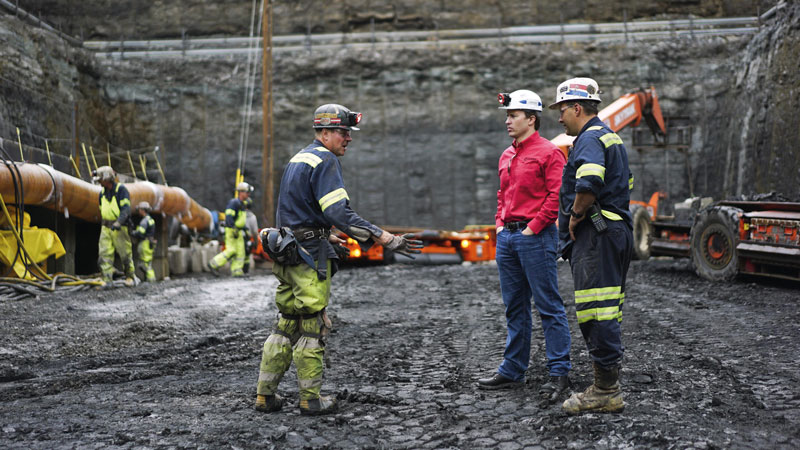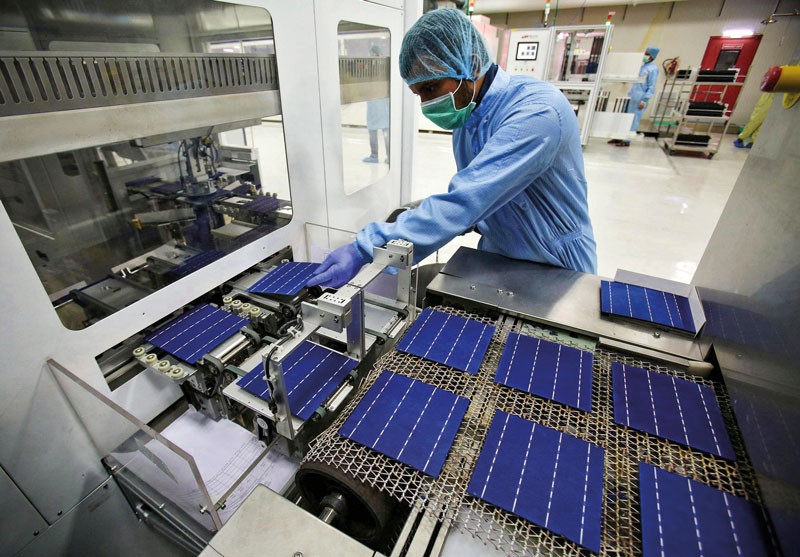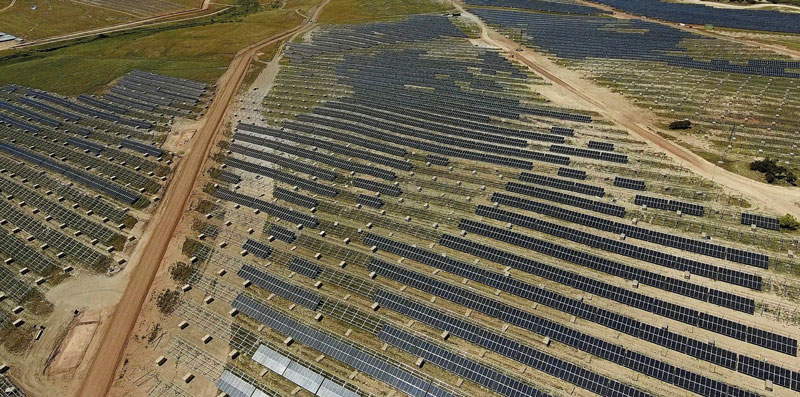Fighting Tomorrow: The COVID19 Impact on Energy
This article is a sincere effort to analyze what makes sense, highlight some patterns and indicate some signs of the times when it comes to the future of Energy as it is being reshaped in our times.
Amidst the unprecedented COVID19 spiral, news, fake news, borderline mass hysteria and lots and lots of opinions are being spread in lightning speed. The difficulty to control and analyze what makes sense or not, which was already hard pre-COVID19, has been surmounting for weeks now.
The COVID19 Pandemic Analysis: What this pandemic might mean for the energy sector
To start with, some seemingly good news is that banks seem better capitalized than they were in during the Global Financial Crisis (not that it was such a high standard). As the weeks pass though, and the global ‘sneeze’ does not go away, liquidity is becoming increasingly scarce. Investors are moving away from risk and that is almost expected. This could have a direct effect for the financing of projects in frontier markets as well as newer technologies where risk-sharing practices are not as well established. Smaller developers with projects not yet off the ground could also be hit hard, as their financing becomes scarce. Either way, a significant contraction is expected, followed by a catch-up period over the next years. The way we choose collectively to overcome (or not) the crisis, will determine if the future will be even brighter than pre-COVID19.
Since the markets seem stable, for now, another aspect that we never had to deal with in such a way, is drawing attention increasingly: Energy security. Energy security remains a major area of focus and the crisis highlights the critical value of infrastructure and knowledge, as a response to the pandemic. It highlights the immense importance of the sector, and what policy makers need to do in order to ensure that current and future systems remain reliable and dependable.
It is really unclear exactly how this pandemic will impact sub-sectors like renewable energy, which are somewhat protected by long-term power purchase agreements (PPAs).
The most obvious result of these shocks is clear: Economic contractions reduce power demand, because every form of economic activity requires electricity, directly or indirectly. The last recession reduced power demand in the United States by about 10 years’ worth of growth.
U.S. electricity use on March 27, 2020 was 3% lower than on March 27, 2019. That difference represents a loss of about three years of sales growth. Electricity use will trace the same path as total economic output as the crisis unfolds, but will likely drop less in percentage. That’s because electricity use is a necessity, and essential services and households will continue to use power. Some, like health care, will use much more.
In this context, the Energy mix is being put again on the table. Government policies and public pressure are also forcing utilities to retire coal-fired power plants. Since 2010, 102,000 megawatts of coal generating capacity have been retired – nearly one-third of the total U.S. coal fleet – and at least 17,000 megawatts more are expected to retire by 2025. Most of this will probably be replaced by wind, solar and hydropower. Despite the current crisis, there is long-term pressure from many directions to add carbon-free energy.

Nevertheless, economy-driven demand reductions, which are likely worldwide, will hurt new renewable installations. Utilities will tighten their budgets and defer building new plants. Companies that make solar cells, wind turbines and other green energy technologies will shelve their growth plans and adopt austerity measures. For example, Morgan Stanley’s highly respected clean tech analysts project declines of 48%, 28% and 17% in U.S. solar photovoltaic installations in the second, third and fourth quarters of 2020, respectively. Countervailing factors will partly offset this decline, at least in wealthy countries. Many renewable plants are being installed for reasons other than demand growth, such as clean power targets in state laws and regulations, and are already under contract or construction. Voluntary green energy purchases by U.S. companies increased by almost 50% in the last year, to 9,300 megawatts – almost 1% of all U.S. power capacity. And residential customers are choosing to buy more renewable energy through options such as community solar programs.
Since early 2019 crude oil prices have collapsed, declining almost 64%. As oil market guru Daniel Yergin recently observed, this drop is likely to be steep and prolonged “it’s a problem of an oil price war in the middle of a constricting market when the walls are closing in. Normally demand would solve the problem in a way, because you would have lower prices that act like a tax cut and it would be a stimulus. But not in this case because of the freezing up of economic activity”.
This oil price collapse has also reduced U.S. natural gas prices by about one-third from year-ago levels. Like electricity and oil, natural gas use rises and falls with economic activity; it is somewhat less sensitive to economic trends than the highly reactive oil sector, and more sensitive than comparatively stable electricity use.
Ordinarily, cheaper natural gas – which is widely used for generating electricity – would stimulate electricity demand by reducing the price of power, thus increasing economic growth. But in this unusual era, the effects of lower oil and gas prices on renewables will be somewhat murky and complex, and will probably differ substantially by market and region.
For some new plants in places where policies do not effectively mandate renewable energy, continued or even new use of oil and gas generation will look cheaper. For example, replacing dirty diesel generation with solar power plus some form of energy storage will not look nearly as attractive now as it did a year ago. This is especially worrisome in emerging nations, where the overwhelming imperative is to expand electricity supply as cheaply as possible. These economies are always short on capital and highly sensitive to energy costs. If they opt for cheap fossil fuels instead of renewables, it will be bad for air quality and climate policy.
Senior officers of IEA stated: “The COVID19 brings other dangers for clean energy transitions. China, the country most heavily affected by the virus initially, is the main global production source of many clean energy technologies, such as solar panels, wind turbines and batteries for electric cars. The Chinese economy was severely disrupted during the government’s efforts to contain the virus, especially in February, causing potential supply chain bottlenecks for some technologies and components.”
The most significant near-term impacts on renewable plants that are already contracted or under construction may be felt through supply chains. Renewable industry executives are anticipating delivery and construction slowdowns, either because nations shutter industries to slow the spread of COVID19 or because workers start getting sick.
Many parts for large-scale renewable projects come entirely or partially from China, other parts of Asia or the United States. These are specialized supply chains with few ready substitutes. The COVID19 outbreak has already slowed Chinese production of solar panels and materials, delaying projects in countries including India and Australia. Manufacturing disruptions in China could contribute to a significant one- or two-year dip in renewable additions.

How energy demand is shaped when people are home quarantined
No one can argue that with the novel corona virus disease (COVID19) some things happen for the first time, especially the confinement of roughly 2,6 billion people which corresponds to one third of the total human population. Just for comparison, the world population in 1940 was 2.3 billion people, 300 million less than those being asked to stay indoors today.
For sure, there are some positive effects such as the drop of carbon dioxide emissions around the globe, but we will examine the impact on energy demand patterns, a result of mass home confinement for the good of public health. Goldman Sachs experts estimate that these confinement measures-that are impacting 92% of the world’s GDP- will eventually result to “the largest economic shock of our lifetimes” and might alter permanently the energy markets.
Starting with the electricity system, the energy demand is historically low and the biggest challenge for the grid operators is to keep the system running by continuously adjusting their day-to-day operations without being able to make long-term demand plans. The demand is lower during the morning and middle of the day (less industrial and commercial load than usual) and the operation of large synchronous generators is becoming a problem that may affect the system’s stability. In order to deal with unpredictable demand patterns, scenarios of negative electricity prices during the day were put into the table to simulate the demand patterns before the lockdown. However, without the large electric loads from factories and shops it is hard to bring these patterns to normality.
All the above are well reflected if someone takes a look at the European power and gas prices that have sunk, with the benchmark German wholesale 2021 power price hit a two-year low of EUR 33.50/megawatt hour (MWH) at the end of March. With many factories of the automotive sector closed, the German industrial demand for power could drop by up to a fifth this year according to Enervis energy consultancy. Other analysts see a price fall of 5-10% when the lockdown ends. Trying to make estimations about the rebound, analysts have their eyes fixed on China’s economic emergence after the confinement measures. Economists say that the rebound is progressing slower than expected, tracking indicators such as electricity demand and power generation capacity which may be positive (abt. 10% up comparing to February) but the recovery is lagging way behind from what was expected.
The Oil industry in survival mode
As the virus wreaks havoc in several markets around the globe the Oil and Gas industry seems to be in survival mode in need of a ‘life vaccine’. For the next four months at least the depressed demand for oil and gas is no good news for the industry companies. Oil futures have dropped more than 50% since the beginning of the year and more than 20% or 20 million barrels per day of oil demand may be lost as the demand slows down even more according to the International Energy Agency. This number corresponds to the total of US consumption. Saudi Arabia and Russia have been increasing production the past two months in order to regain aggressively market share from American companies that increased their exports in the recent years. This has led the oil markets facing extremely low prices and the shale boom that turned US into the world’s largest oil producer is unravelling fast. By the end of March, the country’s production fell to 600,000 barrels a day from a record of abt. 13 million shale rigs remain idle in the Permian Basin of West Texas and in other parts of the country. Shale producers cannot stay afloat with prices below USD 30/barrel.

Rihad and Moscow have created a fierce oil battlefield around the COVID19 pandemic and US president’s Donald Trump proposal with a tweet – to cut about 10% of the worldwide crude production- was actually a realistic thought, capable of saving thousands of crude oil producers and millions of jobs. The Members of the Organization of Petroleum Exporting Countries, and allied producers led by Russia, since 2017 are part of a coalition known as OPEC+. All members were willing to curb their output so they could keep the market in a balance, facing the pandemic threat and buying time for more effective measures if needed. The holdout in this deal now is Mexico despite the fact that Russia considers this plan as a done deal. Examining the sudden positive reaction of Russia and Saudi Arabia we can easily understand that in this rally for oil production, Moscow risked having no place to store the crude and Rihad needed higher prices to be able to fund the Kingdom’s budge, which is shaped considering higher oil prices. The G20 meeting on Friday 10/04/2020 committed to find a balance between oil producers and consumers but without specific measures for production cuts.
Mexico via its Energy Minister Rocio Nahle insisted on cutting only 1/3 of the oil production which is about 100.000 barrels per day instead of abt. 300.000 barrels per day which is their fair share corresponding to the proposed 23% reduction. President Trump has agreed to help Mexico in making a deal with Saudi Arabia and Russia. On the other hand, Russia considers the deal ‘very positive’.
Finally, after several negotiations and marathon video conference calls, the OPEC+ members and the G20 decided to proceed to a historical deal to decrease the global oil production to fight the impact of the global pandemic on demand. Ed Morse, a veteran oil watcher of Citi Group commented: “Unprecedented in historical discussions of production cuts, the US played a critical role for the new OPEC+ accord.” OPEC+ will cut 9,7 million barrels per day. Canada and Brazil will also contribute another 3.7 million barrels per day on paper as their production declines. The deal was closed and finalized on Catholic Easter Sunday, just four hours before the oil market reopened. Mexico won for sure a big diplomatic victory managing to maintain its initial position firmly, cutting only 100.000 barrels as mentioned above, but this move may be a reason to leave the alliance over the next two months. President Trump, the man who was historically OPEC’s hardest critic, managed to bring together Saudi Arabia and Russia and actively press for the largest supply cut in history, becoming the first American President to push for higher oil prices in more than 30 years.
Copying a model implemented also by banks, the production restraints will last for about two years and be reduced over time. The deal will be implemented starting from May 1st, which means that for three weeks the members of OPEC will be able to continue production and flood the oil market. Amrita Sen, chief analyst of Energy Aspects Ltd estimates that “With the issue of Mexico taking so long, so sort, the credibility of the group has taken a hit”. Even if the deal is poorly implemented, the agreement will make a difference to the market according to Ann-Louise Hittle, vice president of macro oils at consultant Wood Mackenzie Ltd.
However, the savage truth of 20 to 35 million barrel per day losses – result of the decrease of the estimated global demand- is too much to bear and could have devastating impact on the global oil and gas market. After the Easter holidays, oil inventories according to analysts are expected to rise sharply with demand facing a minus 20% this quarter.
Considering the above, it seems that the above historic deal, will only be a temporary medicine rather than a vaccine, as this production cut seems unable to counterbalance the extremely low demand formed by the global pandemic situation.
Coal struggles to keep up in a difficult battle
As mentioned, electricity demand is hammered by the novel COVID19 and this is also reflected in coal generation that declined 36% in March in the US, compared with the same month last year according to an E&E News review of federal figures. Also, the U.S. Energy Information Administration (EIA) expects coal generation to decline 20% in 2020.
In Europe, EU carbon prices reached a 22-month lows at 15 euros a tone in while European coal 2021 futures, at USD 56.4, are only USD 1.9 about the contract low. The result of the declining coal demand in both sides of the Atlantic, has been a steady build-up in utility coal stockpiles. Analysts estimate that power companies will most probably run out of space to store any additional coal shipments in the next few months.

Joe Aldina, a coal analyst at S&P Global Platts said that “We could test the physical constraints of coal stockpiling this summer. You may be in a situation where inventories are high in order to burn through them regardless of fleet economics.” EIA is estimating coal production to fall abt. 153 million tons, or 22%, to 537 million tons in 2020. Also, Jim Thompson, an analyst at IHS Markit said that “The greater threat to the industry is that the current downturn could impair coal’s projected recovery”.
During these challenging times for the coal industry worldwide, many mining firms are having difficulty in accessing capital and as a result, companies cannot reopen mines or ramp up production. If the stockpiles start to affect the supply chains the industry could be in a situation where demand will rebound in 2021 but miners will not be able to meet it.
As estimated from the Institute for Energy Economics and Financial Analysis, (a research group that supports a transition to clean energy) wind, solar and hydro combined, produced more power than coal during the first three months of the year. On the contrary, coal use has been diminishing in Europe but it could be considered as a cheap and reliable source of energy to rebuild economies after the pandemic, said Steve Hulton, Rystad Energy’s head of global coal research. However, the increasingly falling demand means that fewer power plants are needed to operate to cover the energy needs and with gas prices in historic low levels and RES generating zero fuel costs, this could leave coal out of the equation, as a higher-cost electricity generator.
Renewables battle fiercely with the unprecedented COVID19 pandemic
Coming to RES, in 2019 according to figures from International Energy Agency, the global renewable energy capacity hit 2,537 gigawatts (GW) at the end of last year, an increase of 176 GW compared to 2018. Additionally, the new additions last year were slightly lower than the revised total of 179GW added in 2018. The COVID19 pandemic seems to cast a shadow in 2020 forecasts for renewables, impacting supply chains and manufacturing facilities, but will this virus be sufficient to stop RES growth?
Renewables in 2019 accounted abt. 72% of all power expansion, with solar and wind growing by 98GW and about 60 GW respectively. Combined, they reached a total of 90% RES additions last year. Hydropower on the other hand, had very low growth las year and according to IRENA’s General Director Francesco La Camera this was due to a number of projects that missed the actual completion deadlines. This year, with many factories programmed to stop their activity and supply chains being weak, huge challenge for renewables is depicted on the energy horizon. As already mentioned above, oil prices are hammered down facing extremely low demand and this could potentially make renewables less attractive to some markets. On the other hand, many structural parts needed for completing RES projects are cheaper due to their low raw material prices this period, so for many manufacturers this could be translated as a business opportunity, especially considering the part of RES in the future energy mix. The estimations form research and consulting firm Wood Mackenzie are that global solar installations for 2020 had been revised down from 129.5 gigawatts (GW) to 106.4 GW, which represents an 18% drop compared to pre-COVID19 levels.
However, in early April, in the middle of the COVID19 crisis a Spanish 500-megawatt solar PV plant, described as ‘Europe’s largest’, sent its first megawatt hour of energy to the grid, being a light in the darkness for the RES industry. The Nunez de Balboa facility is located in Extremadura, a region in the west of Spain. The facility has over 1.4 million solar panels and will be able to supply energy to 250,000 people per year. Coming to news from the windfarms sector, the Danish wind turbine manufacturer Vestas — a major player in the sector — suspended guidance for 2020 because of disruptions to installations, manufacturing and its supply chain caused by the global spread of COVID19 and national measures taken to contain it.

The latest estimations coming also from the other side of the Atlantic, are that the renewable-energy business is expected to withstand the pandemic storm better than fossil fuels – which have been hammered from low oil and gas prices- and keep growing but more slowly. If we take a look at the United States, renewable energy sources are set to account for nearly 21 percent of the electricity the uses for the first time in 2020.
In many parts of the world, including California and Texas, wind turbines and solar panels are able to generate electricity with lower cost than natural gas and coal and this is very attractive to electric utilities and investors. We should also consider the fact that while oil prices have dropped more than half, the same doesn’t apply to coal and natural gas prices, at least for the moment. Even the depressed demand for electricity may boost renewables, according to Raymond James & Associates. This possibility emerges, due to the fact that while revenues suffer, utilities might try to get more electricity from solar and wind farms which have significantly lower operational costs than power plants with fossil fuels.
However, looking in short term predictions the future might not be so bright, as according to the Solar Energy Industries Association, in the US half of the workers in the solar industry (250,000 in total) might temporarily lose their jobs. Considering that it is early for such estimations, Wood Mackenzie say that these predictions could be overly pessimistic because this situation changes in daily basis. They believe that this sector will continue adding capacity.
Considering another aspect of the pandemic, it is a fact that renewable projects might require multiple meetings in person at government and community levels. The social distancing measures are an obstacle to this situation and this may result to delayed permission processes if there is no alternative solution. Also, large utilities and power companies are not the only participants in RES growth during the past years. An estimated 20% of renewable capacity added globally in 2019 consisted of individuals and medium to small companies installing solar PV panels on their roofs in homes and businesses. These installations are known as distributed solar PV, and last year accounted over 40% of global solar PV deployment according to IEA. Renewables help reduce carbon dioxide (CO2) emissions and improve energy security. The so-called RES industry is a significant global employer and a big investor in new projects as well. The costs of generating electricity from hydropower, solar PV and wind are now comparable or lower than those from newly built fossil-fuel alternatives in many countries around the globe.
The growth of renewable capacity additions this year may slow down for the first time in their history. Governments have the ability to change this trajectory with targeted economic countermeasures that can enable renewables to grow sustainably the following years. Right now, the whole world has its eyes fixed on dealing with the huge public health challenge and take measures to battle a widespread economic crisis. As governments will continue to work on repairing the economic damage there are a number of actions that could help in this direction and also in the deployment of RES projects.
Firstly, governments can create specific financing measures and incentives for renewable projects in upcoming stimulus packages. Additional economic incentives such as investment grants, loan schemes and tax credits are be necessary to shape a strong future demand for the distributed solar PV sector which will suffer the most.
Secondly, deadlines for commissioning projects beyond 2020 could be extended helping this way renewable project developers to avoid any financial penalties and allow them to keep incentive in investing to existing or new projects.
Third, trying to visualize the future of clean energy, the short-term actions need to align with the medium- and long-term ones in terms of policy. Funding for new not yet commercialized energy technologies with high cost reduction potential should be secured, such as hydrogen production and floating offshore windfarms.
The COVID19 pandemic can become a vital threat to our energy future and a very big setback in the world’s energy transition if we do not recognize the threat early and act accordingly. Governments that will take the proper measures promptly may emerge from this crisis with renewed momentum and their countries could play an important role not only to the global energy scene but also to the global economic recovery.
Conclusion: Fighting tomorrow?
One word before we start wrapping the article up: Evolution.
According to Wikipedia, “It is the change in the heritable characteristics of biological populations over successive generations. Evolution occurs when evolutionary processes such as natural selection (including sexual selection) and genetic drift act on this variation, resulting in certain characteristics becoming more common or rare within a population. It is this process of evolution that has given rise to biodiversity at every level of biological organization, including the levels of species, individual organisms and molecules”.
Given that we are not exactly talking about the biological notion of evolution, the analogies are pretty clearly framed and apparent. Natural selection is taking care, as we speak, of the weak links of our global Energy mix. Regulators will continue trying to stop or delay evolution (and ‘natural selection’) through policies but they will not be eventually able to stop it. What we are witnessing is the ‘natural’ or artificial ‘biodiversity’ of the Energy landscape, which is being put to the test by actually natural evolutionary forces. “Nature will find a way” to push evolution forward and even if humans have been actively trying to stop it, COVID19 came to prove that it might be time to move on.
Whether renewable energy sources are the natural evolutionary step towards the future, it remains to be seen. It looks like it though; it also seems to be making lots of sense.
While obscured, the renewable transition is ongoing on a global scale. It also seems that falling costs of renewable electricity are making it more attractive compared with other types of fuel per unit energy. This makes it possible to start a second replacement process, where low cost renewable electricity replaces oil, fossil gas and even coal in other sectors.
Oil is clearly outcompeted on price already, and fossil gas is challenged. Coal is still cheaper per unit energy, but with technical advantages or carbon emission pricing schemes may be outcompeted by renewable power.
One of the top players in the Energy sector, Shell, is already trying to approach the matter and ‘predict’ or shape the evolutionary path; they also have a name for it: Sky Project. Their latest energy scenario, requires a complete re-wiring of the global economy in just 50 years. However, even in 2070, when Sky achieves the societal goal of net-zero emissions, oil, coal and gas are still in use. According to Shell “The Sky scenario pathway illustrates a technically possible, but challenging pathway to achieve the Paris Agreement. In it, renewable energy surpasses fossil fuels for electricity generation shortly after 2030. Renewable energy then dominates electricity generation by the 2050s, but even with an outlook that stretches to the end of the century, electricity doesn’t pass 60% of ‘final energy’ use. The remaining 40% comes in the form of hydrogen and hydrocarbon fuels, such as petrol. And hydrocarbon – oil or gas based – feedstocks are also required to supply a growing chemicals industry.”
All in all, even in one of the brightest scenarios, fossil fuels are still in the mix around 2100. It seems that this transition is going to require a lot of time. That’s ok though: evolution takes time. The first humanoids appeared between five million and seven million years ago, probably when some apes began to walk habitually on two legs. They were flaking crude stone tools by 2.5 million years ago. Then some of them spread from Africa into Asia and then Europe after two million years ago.
If it took 2.5M years for stone flaking apes to rise into what we are today, a couple of hundreds of years seems like tomorrow; even more while we seem to be fighting it.
Co-author: Konstantinos Michalopoulos, Dipl. Mining & Metallurgical Engineer at National Technical University of Athens







